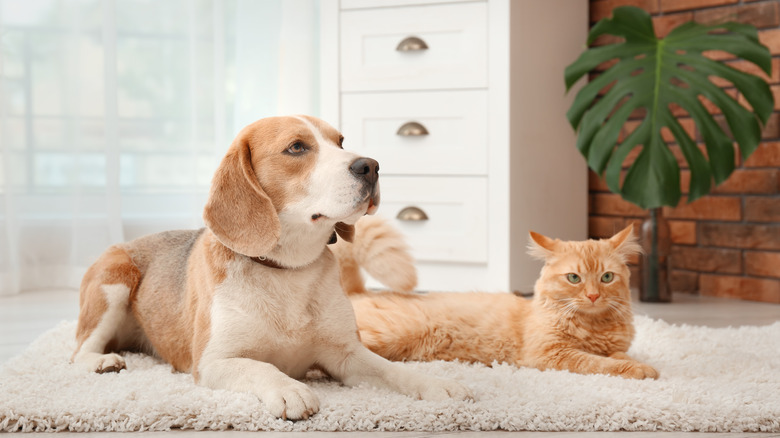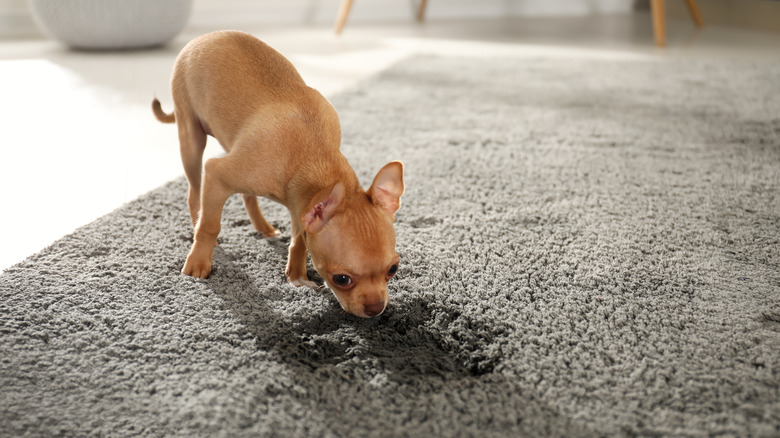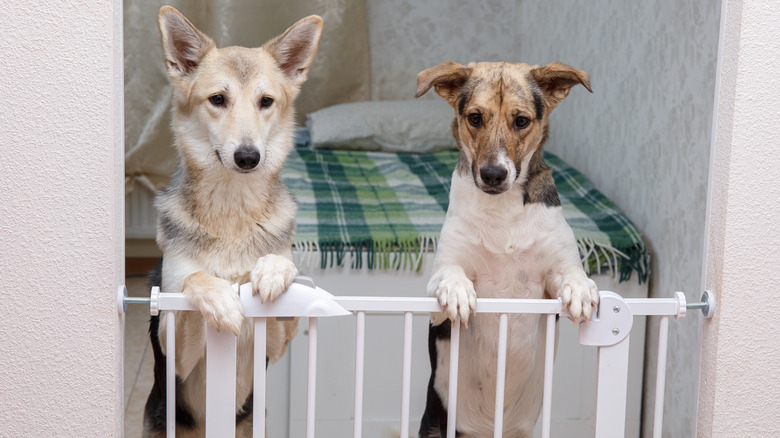Why Protecting Your Carpet From Pet Stains Is Easier Said Than Done
If you're at home, chances are you've got a furry friend at your feet or on your lap. Over half of American homeowners have at least one pet, and many view their pets as an equal part of the family. Our pets mean a lot to us — so much that the average pet owner is willing to spend over 800 hours every year cleaning up after their animals (via Study Finds). But, while we might love our pets like our children, it can still be frustrating when they make a mess, especially if that mess ruins a part of your home.
Replacing rugs may be easy, but it's rare to find large rugs under $800, and wall-to-wall carpeting is a whole different story. So why do pets always aim for the living room carpet when they have an accident? And what makes pet stains so hard to get rid of? The answer mostly comes down to their biology. Thankfully, you have options for breaking the cycle.
Pet stains are notoriously tricky
Not all stains from pets are bodily fluids. Animals can also track dirt with paws, chew pens and markers, and spill food and messy materials onto rugs. However, owners usually think about bathroom accidents when they worry about pet stains. Dogs — especially puppies — tend to be the worst offenders when "doing their business" on rugs and carpets. Of course, cats can also have accidents outside their litterbox, but this often indicates stress or illness.
Urine and fecal stains can be challenging to remove from carpets, as several factors make these different from your everyday spill. Firstly, cat and dog urine is slightly acidic, meaning the longer it sits on your rug, the deeper it will burrow into the fibers even after it's dried. Unlike mud, ink, or wine stains, pet stains also emit an unpleasant odor that can be very difficult to eliminate. As such, failure to immediately treat them can quickly stink up the whole house.
Unfortunately, pets (especially dogs) will often repeat offenses in the same spot, making stain removal feel like an endless cycle. There are several reasons why they might do this, despite all your scolding and cleaning. For instance, if your dog can still pick up the trace scent of urine even after you've scrubbed, they'll continue to pee in the same spot out of habit, to mark their territory, or because it genuinely smells like their designated potty spot.
Prevention is the best solution
Pet stains are a fact of life for pet owners, but there are some steps you can take to limit their occurrence, prevent permanent damage, and keep your house smelling fresh. Start with a pet-first approach and feed your friend a healthy diet with plenty of protein and hydration. Cats are obligate carnivores and dogs are opportunistic omnivores, so consuming too many carbohydrates and oils (like those found in dry kibble) can harm their digestive systems over time. Older pets are prone to developing bladder and digestive issues, so have them assessed by a vet if they keep having accidents.
For cats, preventing accidents can be as simple as frequently changing the litter, finding a litter medium that works for them, and reducing stress. Dogs can be trickier to control, but you can use baby gates to keep them away from prized rugs and provide toys and puzzle treats to keep their mind busy. Also, ensure you're giving your dog a chance to relieve themself outdoors as often as possible.
If you can, choose dark area rugs that won't show visible discoloration from stains, and use a protective spray to keep liquids from sinking into the fibers. Clean up any stains immediately and remove odors thoroughly with baking soda or hydrogen peroxide to prevent repeat accidents. However, if you plan to raise pets for many years, replacing your carpets with tile, laminate, or wood flooring is worth considering.


